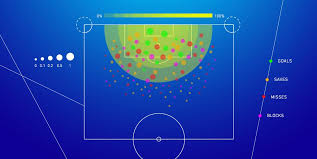
Expected Goals
The incorporation of Expected Goals into pre-match analysis has also transformed scouting and recruitment processes. Clubs can identify players who might not be scoring many goals but are contributing significantly to creating opportunities for themselves and their teammates J88.
The Impact of Expected Goals on Match Analysis
The integration of Expected Goals into match analysis has fundamentally changed how fans and professionals evaluate games. Rather than simply relying on the final score, analysts are now able to assess the underlying performance indicators that contributed to the outcome.
A New Lens on Team Performance
One of the most significant impacts of Expected Goals is how it reshapes our perception of team performance. Traditional metrics often fail to tell the whole story; two teams may end up with the same number of goals, but different Expected Goals totals indicate disparity in the quality of chances created.
This approach allows for a more nuanced understanding of a team’s strengths and weaknesses. For instance, a team with a low Expected Goals total despite scoring multiple goals might indicate reliance on luck or individual brilliance rather than tactical effectiveness.
Identifying Trends and Patterns
With access to Expected Goals statistics, analysts can track trends over seasons. Are certain teams consistently outperforming their Expected Goals metrics? Are they underperforming? Such insights can signal shifting dynamics in league competitions or highlight emerging talents.
Additionally, by assessing players’ Expected Goals relative to actual goals scored, analysts can identify strikers who may be due for a prolific patch—if they’re regularly generating high-quality chances without finishing, it’s often just a matter of time before they start converting those opportunities.
Tactics and Strategies
Coaches can leverage Expected Goals data to enhance their tactical approaches. If a club sees that they consistently concede high Expected Goals against counterattacks, adjustments can be made in formation or player roles to mitigate that risk.

